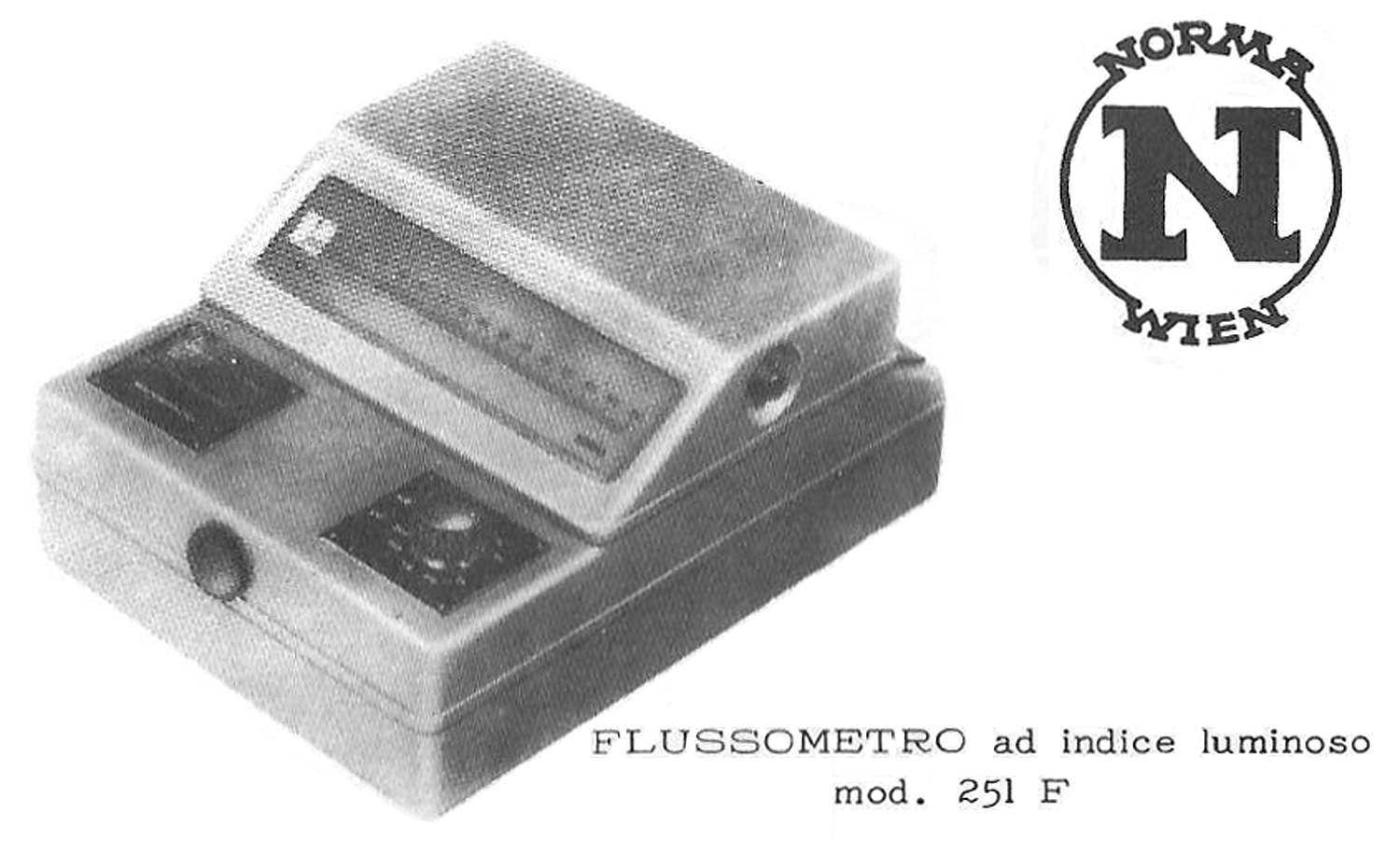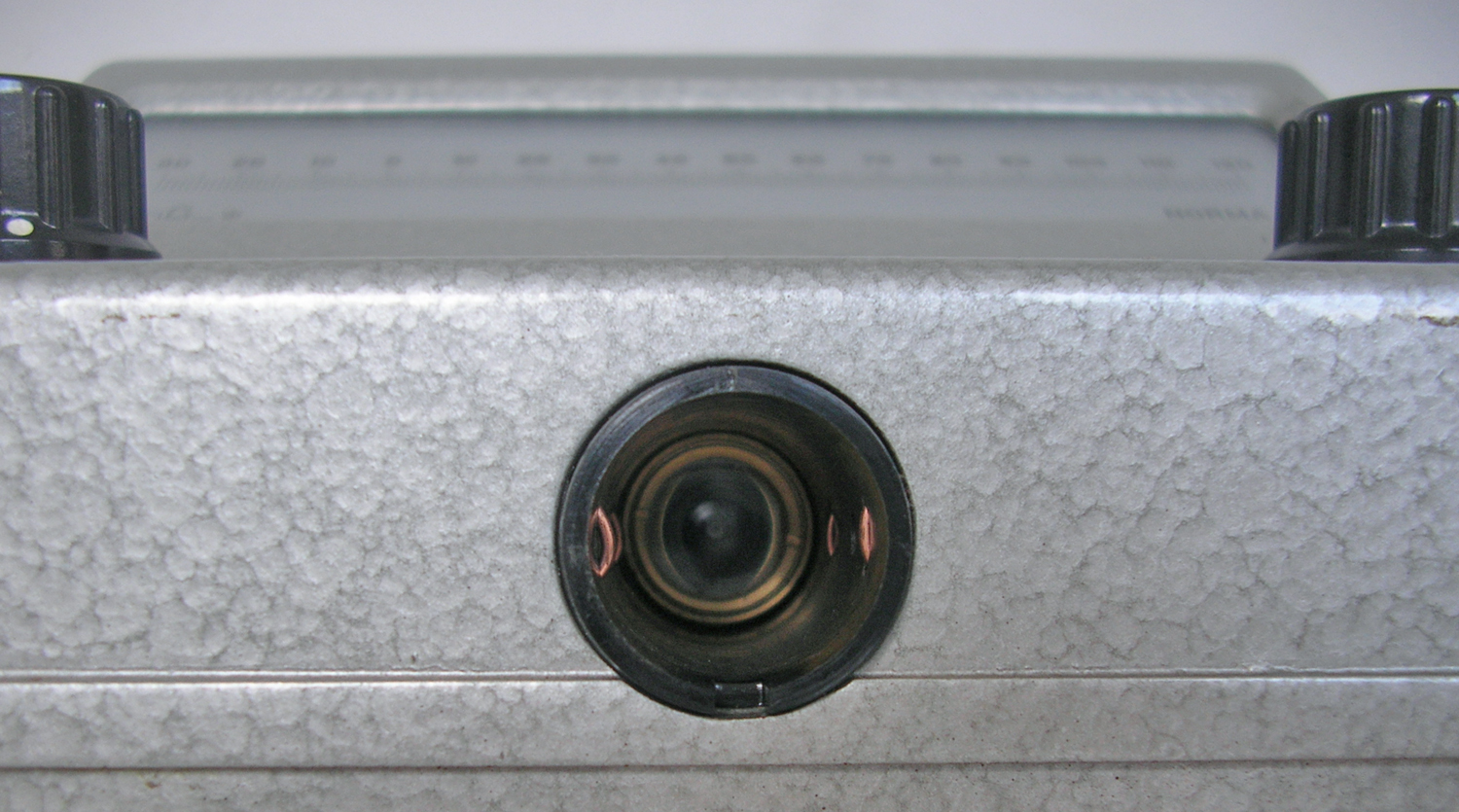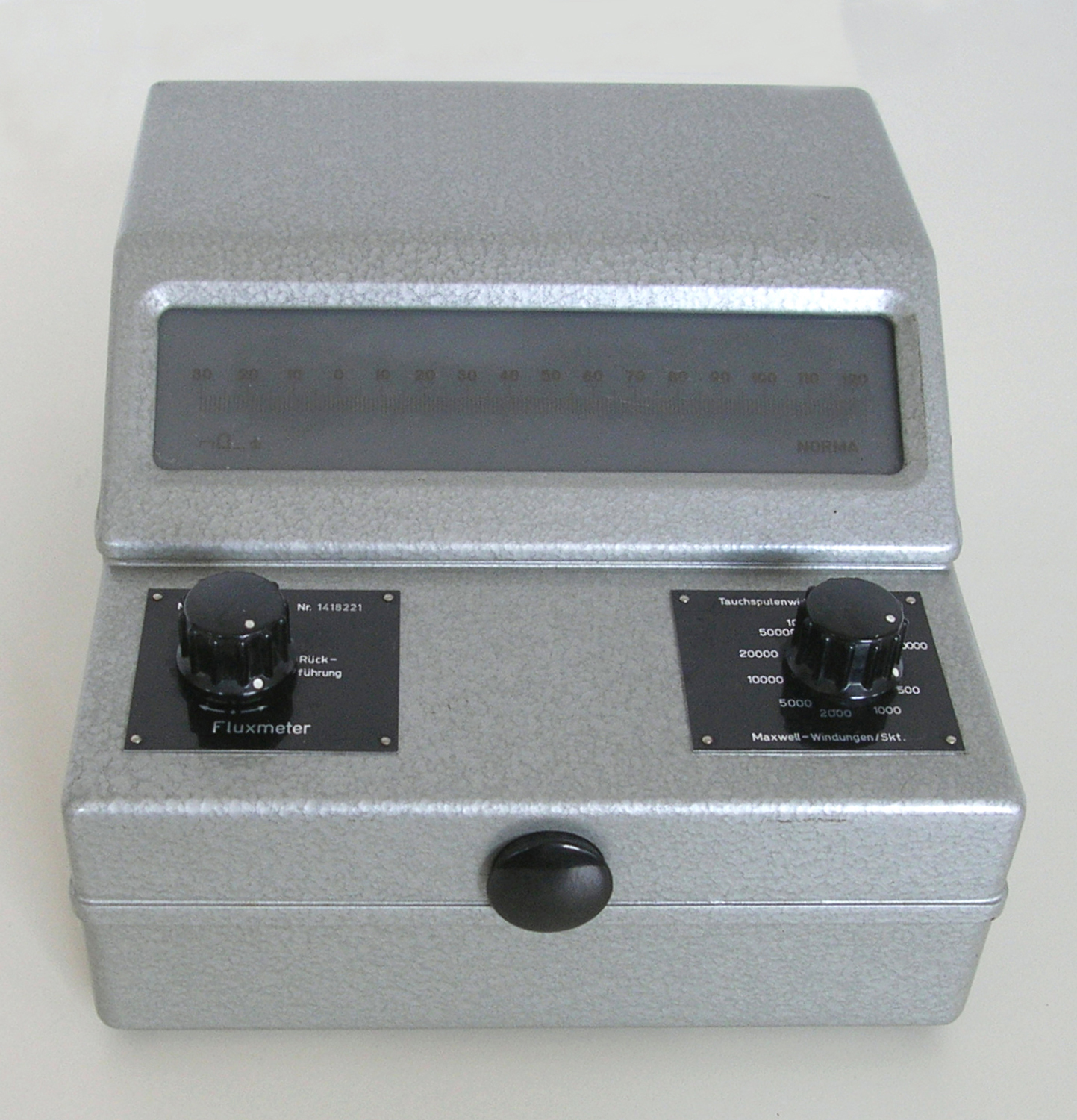
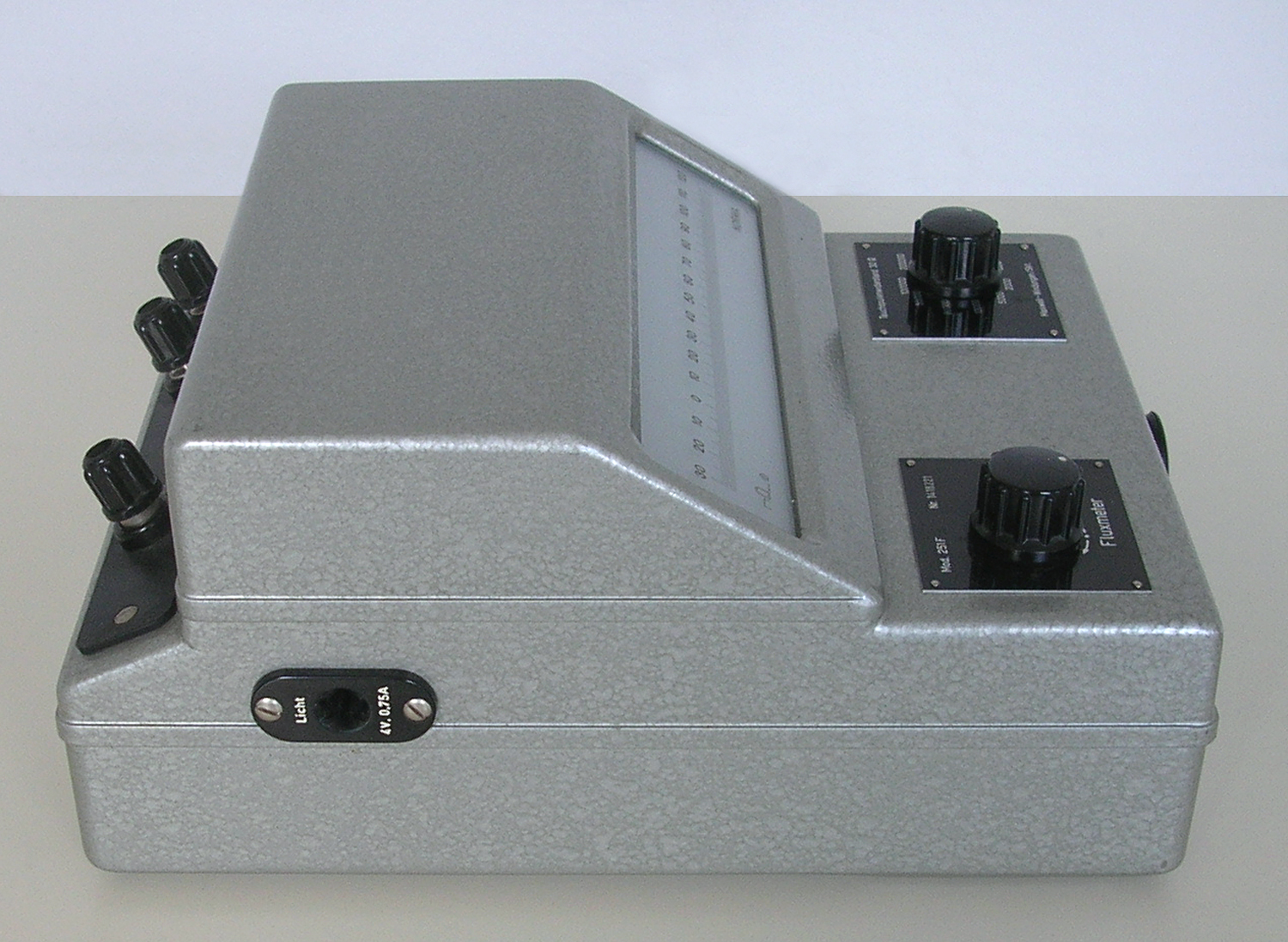
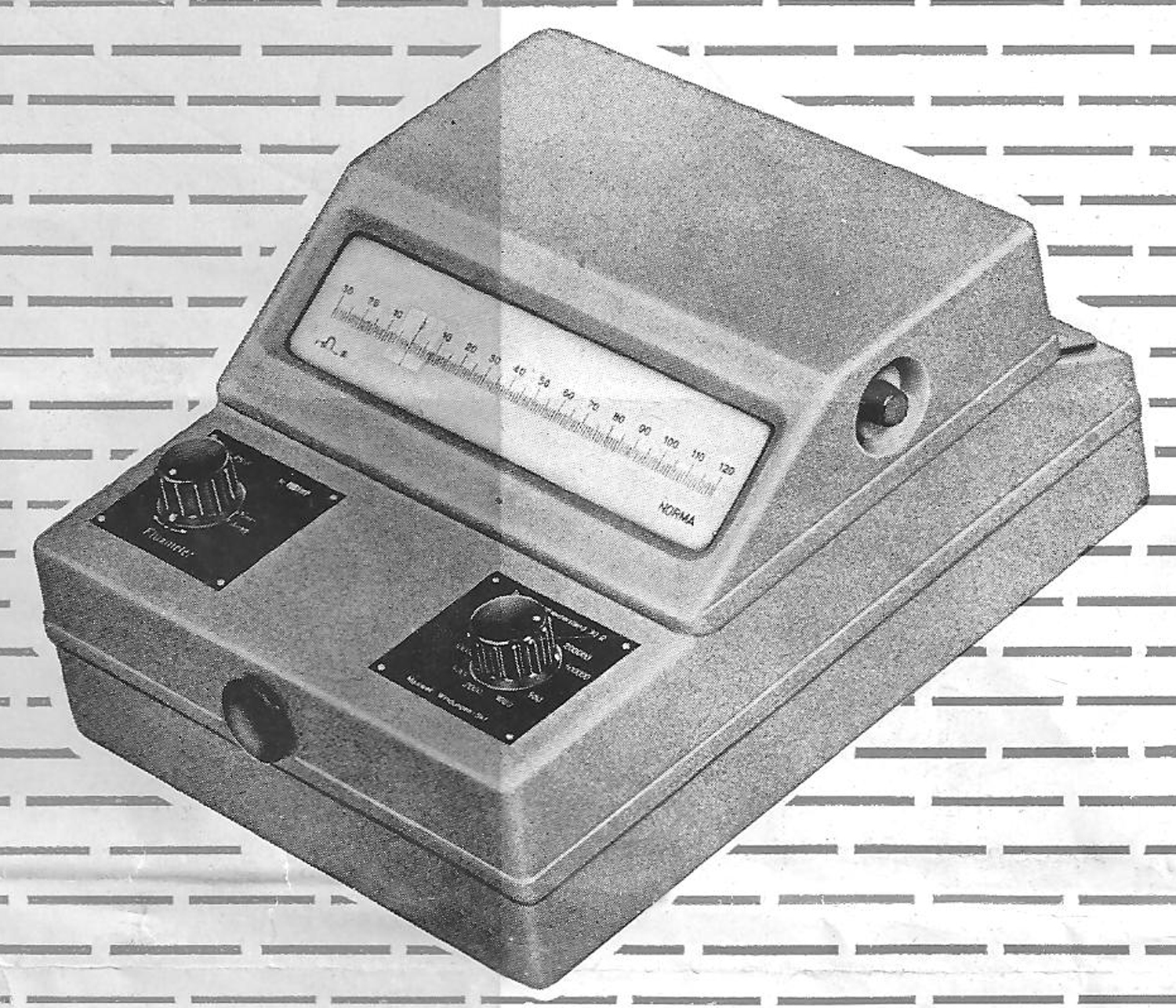 Flussometro NORMA Mod. 251 F, N° 1418221. Prima parte.
Flussometro NORMA Mod. 251 F, N° 1418221. Prima parte.
Nell`inventario D del 1956 al n° 3224 si legge: “Riccardo Beyerle – Milano [importatore, N.d.R.] Flussometro ad indice luminoso Norma mod. 251 F ₤ 514.000”. Acquistato nel dicembre del 1962 e destinato a Laboratorio Misure di Elettrotecnica.
Esso serve per eseguire misure del flusso e del flusso disperso di magneti permanenti o di elettromagneti eccitati in C.C., tempi brevi (tempi di apertura di relais, di otturatori ecc.), impulsi di tensione o corrente con generatori di impulsi, sostituendo in queste operazioni i galvanometri balistici. Può essere impiegato inoltre per il rilievo di cicli di isteresi e di curve di prima magnetizzazione; per misure di capacità; per misure di mutua induzione; per misure dei valori medi di tensione e corrente; come indicatore di zero per ponti in C. A. Serve per prove su relais, contatori, magneti per altoparlanti e macchine elettriche, per la determinazione del numero di spire nei trasformatori ecc. .
Riportiamo integralmente le caratteristiche lette sul depliant di istruzioni:
«NORMA Light – Spot Fluxmeter 10 // Ranges calibrated to 500, 1.000, 10.000, 20.000, 50.000, 100.000 and 500.000 Maxwell turns per Div. // Dial lenght: 6″, 150 Divisions (30 … 0 … 120) // In lowest range: Internal resistance: 40 Ohms approx. Load resistance ( test coil): 0 …60 Ohms // Load resistance (test coil): 30 Ohms in all other ranges // Abs. accuracy: ± 1%, rel. accuracy: ± 0,2 Divisions // Light source: special bulb 4 volts / 0.75 amps. // Housing: light grey die-cast aluminum // Dimension: 8 × 10.5 × 5.3 inches [si ricorda che 1 inch = 2,54 cm e che 1 Maxwell = 100 nanoWeber, unità del flusso magnetico N.d.R.].
Applications: Flux and strayflux-measurements on permanent magnets, DC electromagnets and solenoids of all kind. Analysis of flux density distrubution in magnets and magnetic systems, which is not possible with Halleffect Gaussmeters. The high sensitivity of this Fluxmeter permits its use even with very small magnets and at low flux densities. Short-time impulse measurements from 0.1 milli-sec. up to 1 sec. Principle of operation: Any movement of an electrical conductor in a magnetic field creates an electromotive force (emf) according to the following equation: (1 Maxwell turn/sec.) = 100 nanovolts. A special d`Arsonval system with a high damping factor and as little torque as possible directly indicates the integral over the time of the test coil motion and the created emf ( Fig. 1). 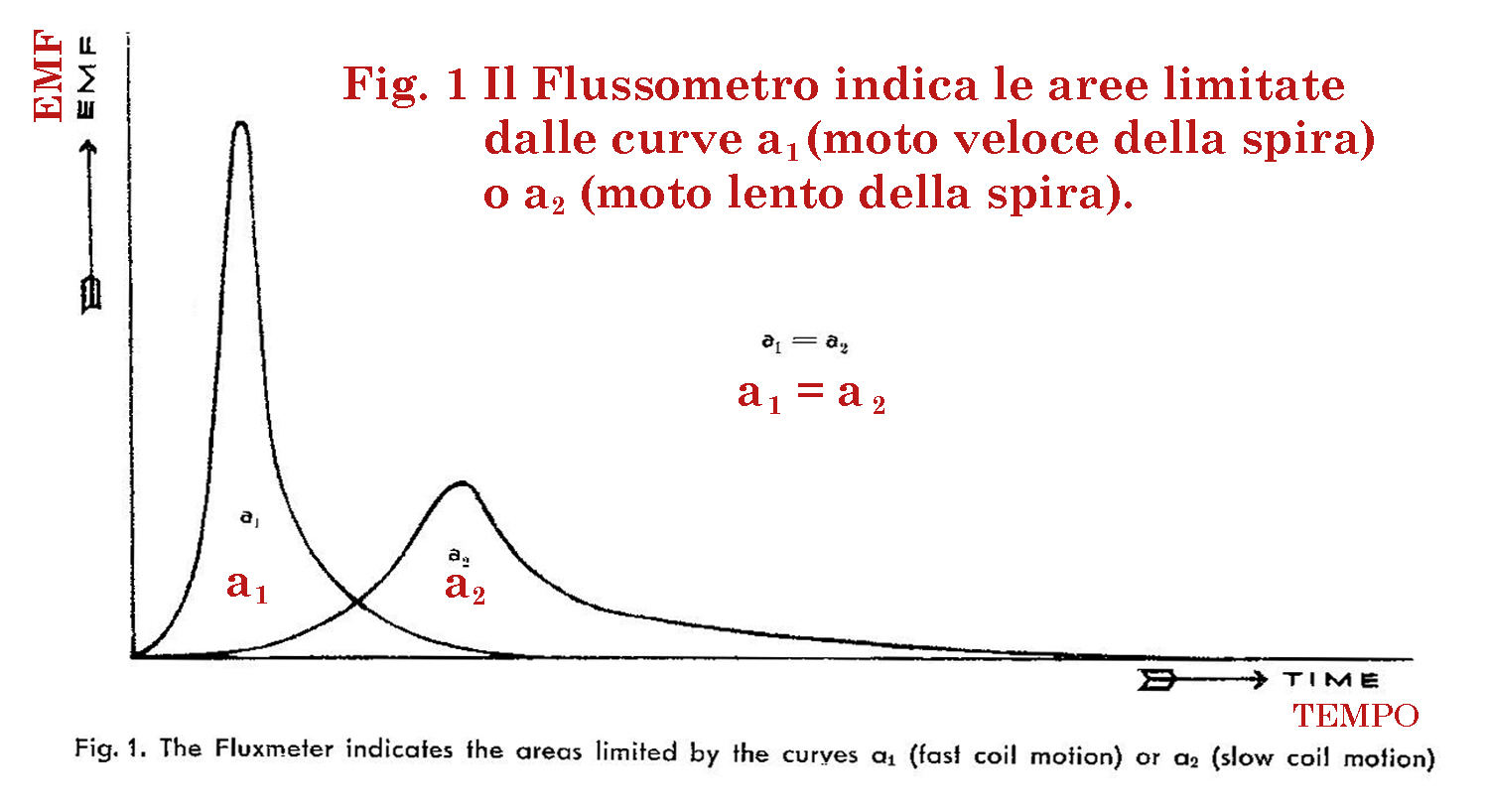 The time or speed of the test coil motion does not affect the measurement as long as it is within certain limits. This is 0,1 milli-sec. to 1 full sec. with the NORMA Fluxmeter.
The time or speed of the test coil motion does not affect the measurement as long as it is within certain limits. This is 0,1 milli-sec. to 1 full sec. with the NORMA Fluxmeter.
Thus the reading of the Fluxmeter in the select range, divided by the number of the turns on the test coil, is equal to the flux at the starting point of the test coil motion, minus the flux at the end point of the motion ( which normally can be neglected). Flux Φ [Maxwell] = (Range × Deflection) /
( turns on test coil) . By Knowing the area of the test coil the flux density B [Gauss] then is: B = Φ [Maxwell] / (area coil [cm²]) [1 Gauss × 1 cm² = 1 Maxwell, N.d.R.]. The NORMA Fluxmeter uses a taut-band suspension d`Arsonval system which moves in the field of an Alnico core magnet. A small piece of diamagnetic material, located within the fiel of the internal magnet, counteracts the torque of the ribbons.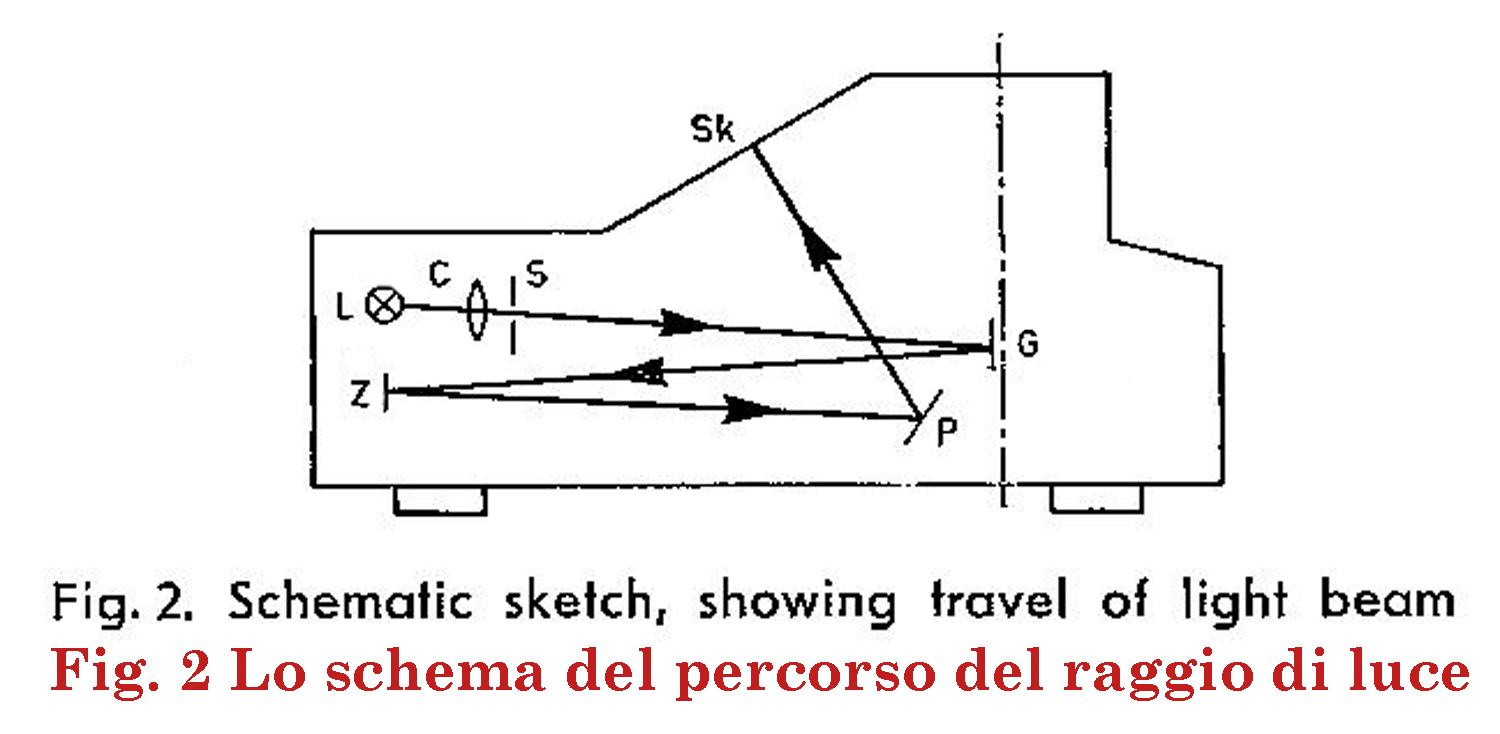 The light beam, guides as shown in Fig. 2, provides a pointer lenght of 1 meter within the small portable cabinet. The brightness of the spot is tripled by a cylindrically ground mirror and is clearly visible even in full day light.
The light beam, guides as shown in Fig. 2, provides a pointer lenght of 1 meter within the small portable cabinet. The brightness of the spot is tripled by a cylindrically ground mirror and is clearly visible even in full day light.
The light source is a small special 4 volt bulb, powered either by external storage battery or a small transformer which can be supplied in addition to the meter. The NORMA Fluxmeter is shockproof, no arresting mechanism and no special sockets are necessary. Light spot return without battery. A photo element, illuminated by the 4 volt bulb, provides the energy necessary to return the pointer to zero. No thermo-electric effects are caused by this metod. High resistance of test coil is permissable, therefore, coils with many turns may be used and lowest flux densities can be tested. Simplest circuitry for magnetic tests. Fluxmeter and test coil are the only parts necessary. Shockproof design. The NORMA Fluxmeter may be used on any normal working table. Nearly torqueless d`Arsonval movement, using diamagnetic material counteracting the ribbon torque. Simple set-up as compared with normal ballistic Galvanometers of equal sensivity».
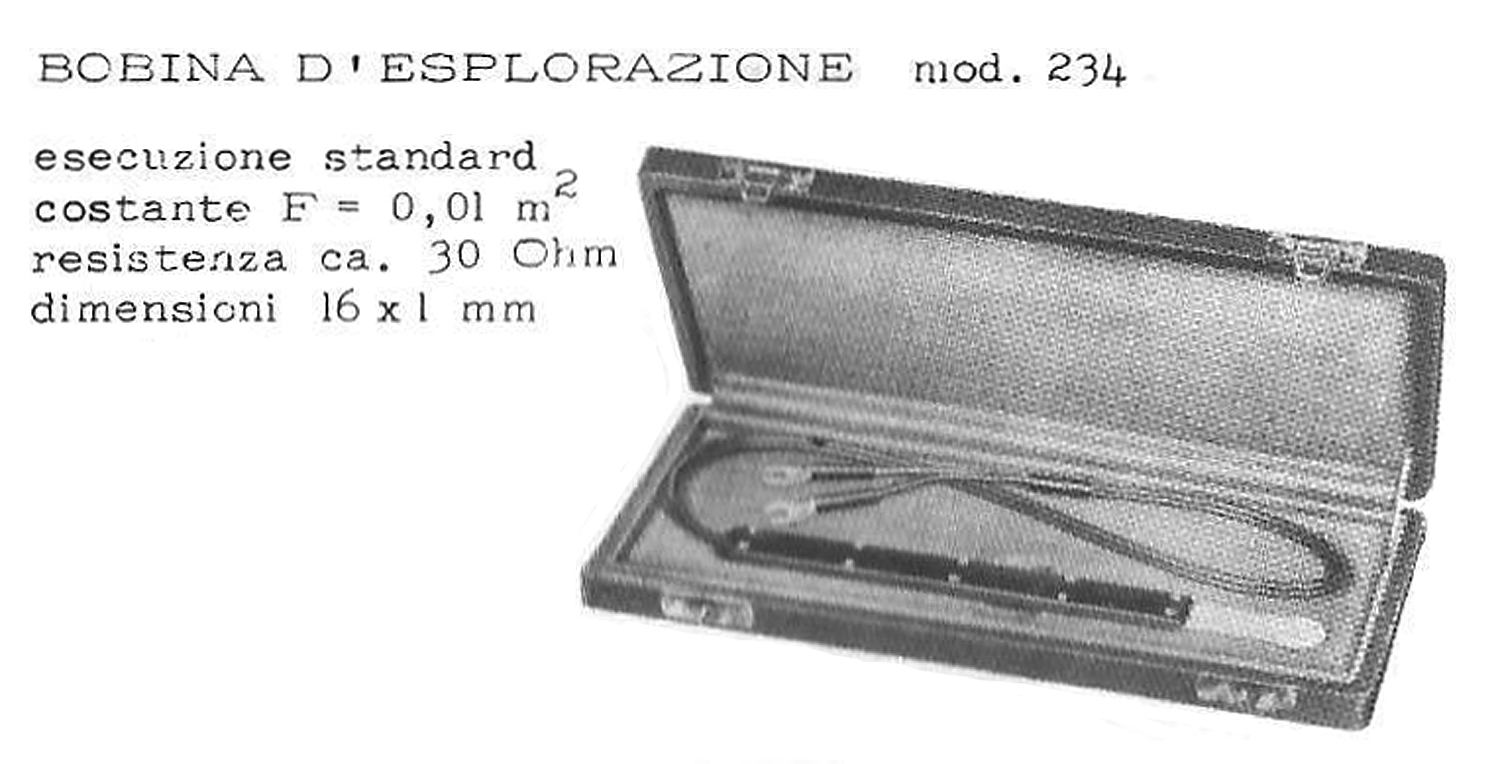
Purtroppo la sonda pare sia andata perduta.
Si ricorda per inciso che il S.I. usa come unità di misura il Tesla per B (1 T = 10.000 Gauss) e il Weber per Φ (1 Wb = 100 nanoMaxwell e 1 Wb = 1 V · s).
Per consultare la seconda parte scrivere: “251 F” su Cerca.
Foto di Claudio Profumieri, elaborazioni, ricerche e testo a cura di Fabio Panfili.
Per ingrandire le immagini cliccare su di esse col tasto destro del mouse e scegliere tra le opzioni.
